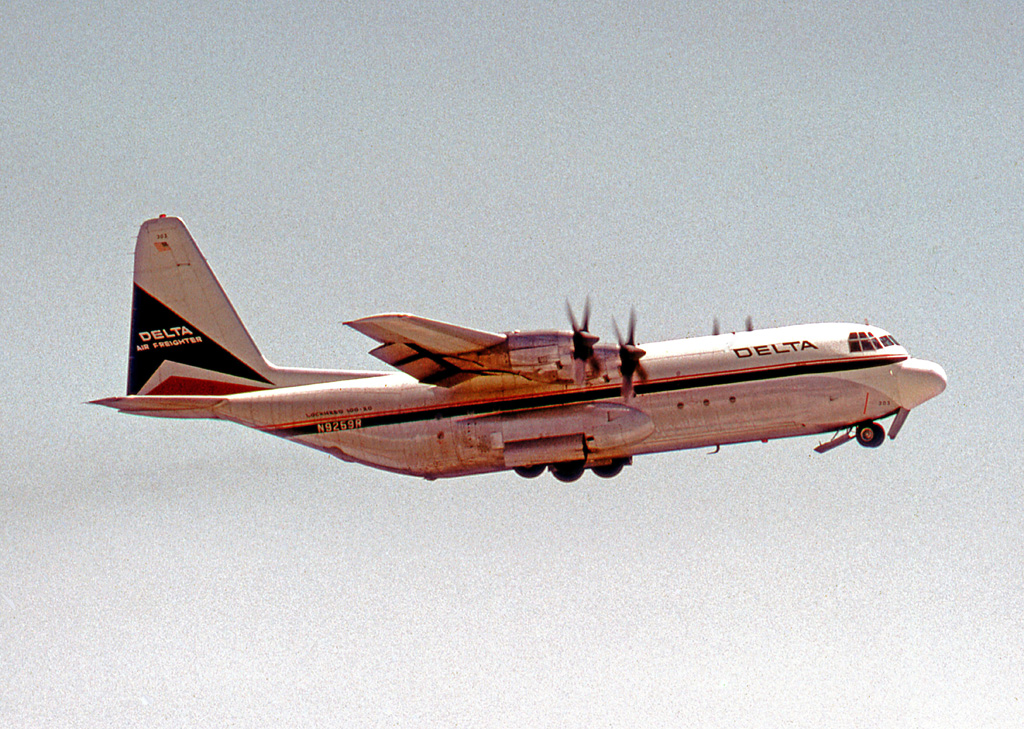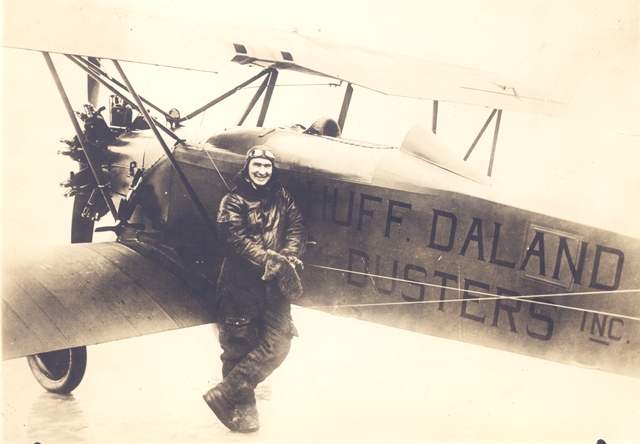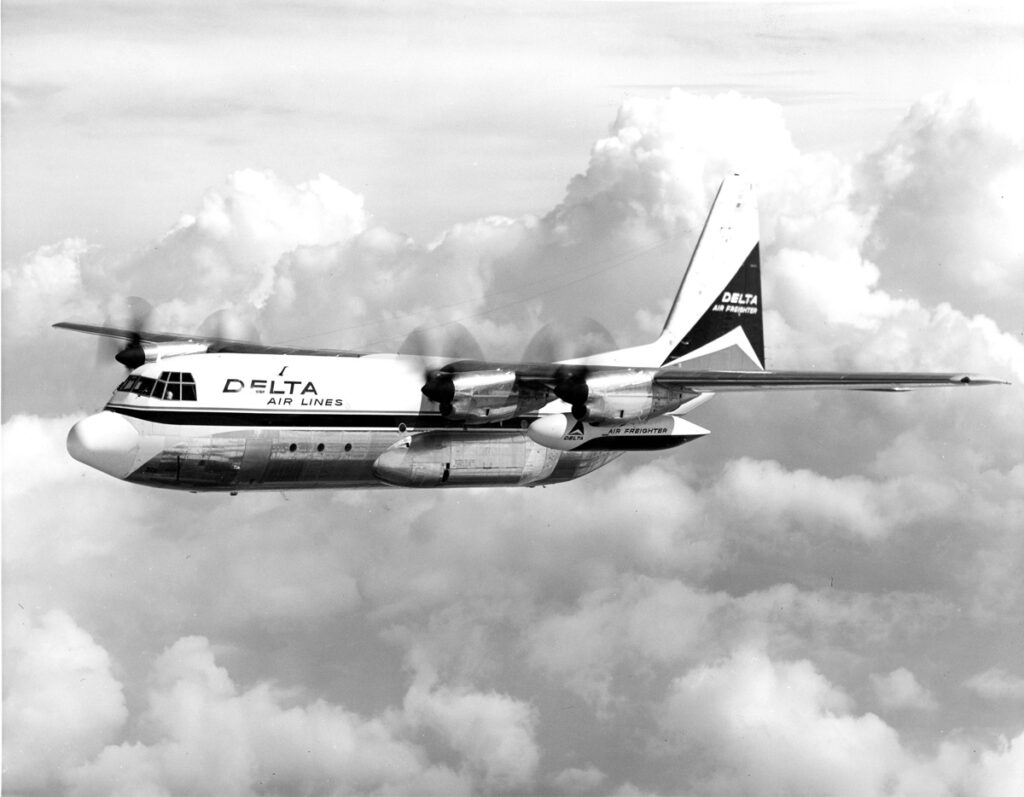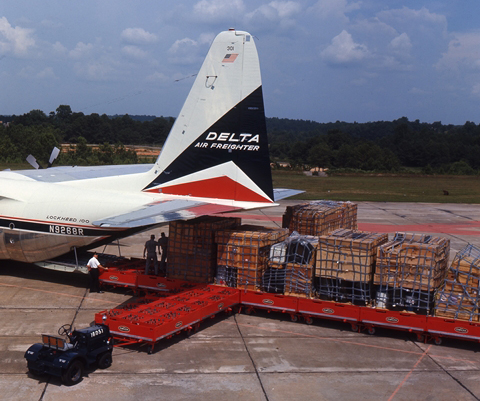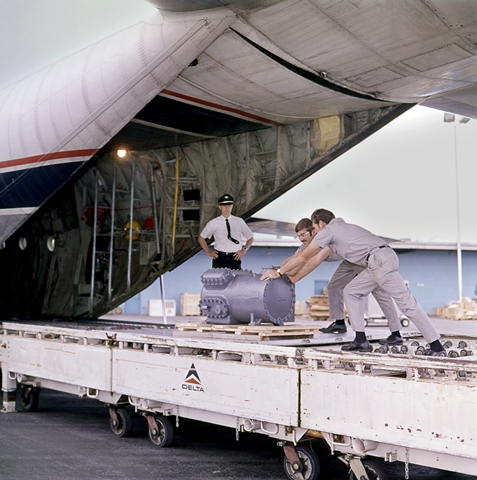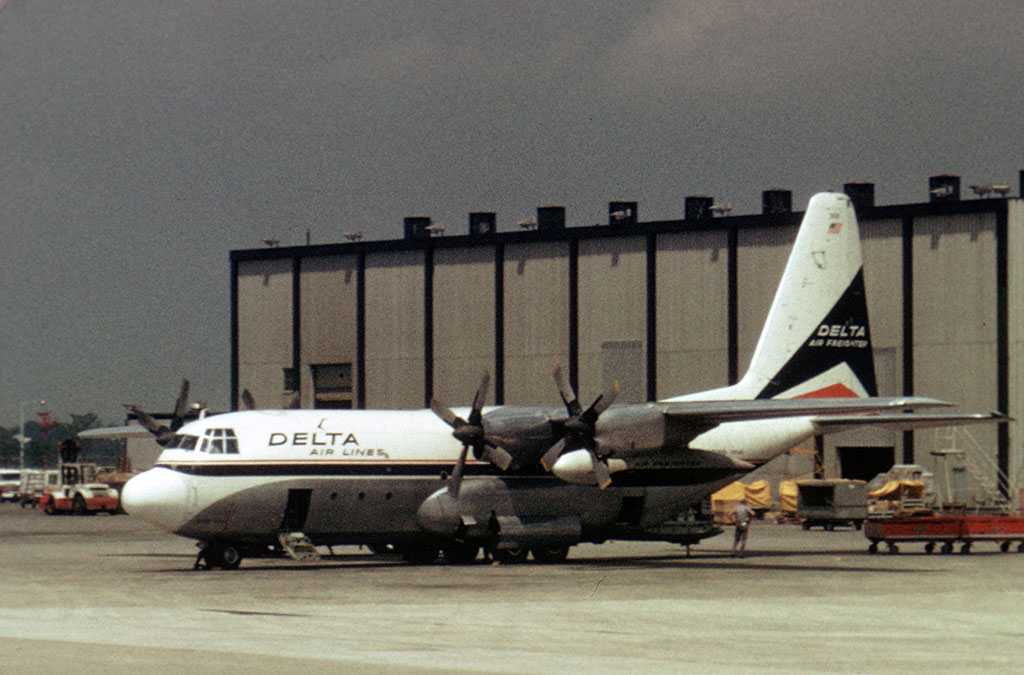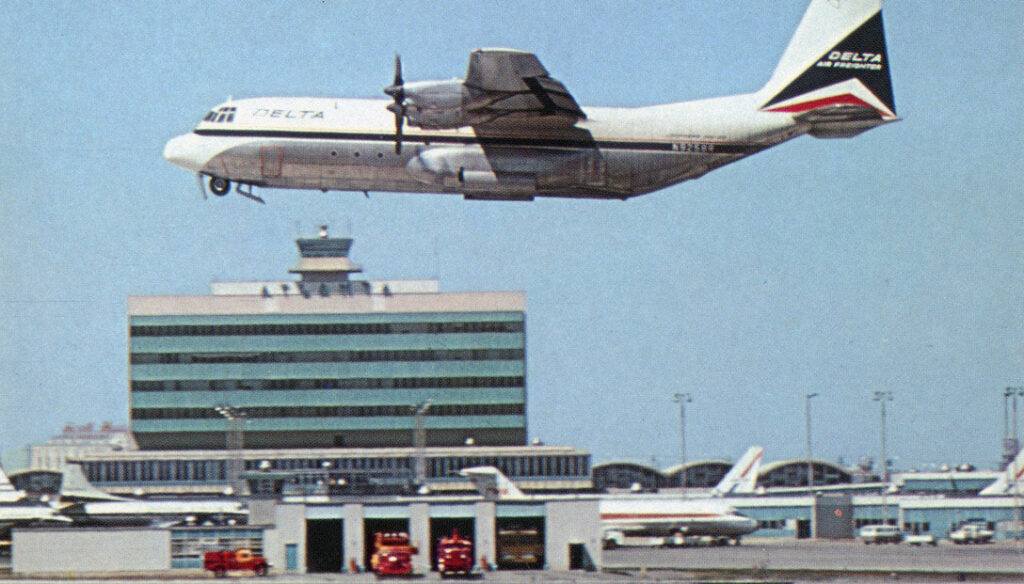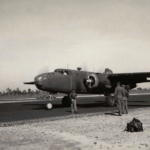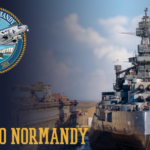The roots of Delta Air Lines trace back to 1924 when it began as a humble aerial crop dusting operation in rural Louisiana. Over the decades, Delta steadily expanded its operations, transforming into a pioneering force in the commercial aviation industry. From its early days as a regional carrier to its present status as a global airline, Delta’s commitment to excellence and customer service has remained unwavering.
However, it was in the latter half of the 20th century that Delta’s story intersected with the storied legacy of the C-130 Hercules. Originally designed by Lockheed as a military transport aircraft, the C-130 quickly earned widespread acclaim for its unparalleled versatility and rugged reliability. Its capabilities transcended conventional military applications, finding utility in various civilian roles, including firefighting, humanitarian aid, and commercial operations.
On August 18, 1966, Delta Air Lines became the world’s first commercial operator of the Hercules, when it took delivery of the first of three L-100-10s, the commercial freighter variant of the C-130. A period brochure from Delta stated, “Delta is the first trunk air line in America to place the Lockheed L-100 Hercules series of jet-prop cargo planes in scheduled air freight service. What this means to Delta is a dramatically increased cargo air lift capability…an opportunity to serve more air freight customers with a finer, more flexible service than ever before. To the shipper, it means virtually anything that can be shipped by trailer truck can now go by air…with next-day delivery coast-to-coast.” Delta’s decision to integrate the C-130 into its operations reflected its forward-thinking mindset and willingness to embrace unconventional solutions.
The Hercules brought a new dimension to Delta’s fleet, offering capabilities that complemented its existing portfolio of commercial airliners. At the time Delta touted the freighter’s tremendous capabilities, “Despite its size, the Delta Hercules can operate in and out of most city airports, taking off and landing on runways of little more than 5,000’ft length. Delta therefore will be able to serve markets never before open to such tremendous air freight capacity. Moreover, Delta leveraged the L-100 cargo capacity and ability to be self sufficient in austere locations. The aircraft did not require any starting equipment, the low cargo deck allowed cargo to loaded quickly and its capability to reverse its propellers allowed the Hercules to back up to a loading area. These attributes were especially beneficial during humanitarian missions, when freighters are called upon to deliver life-saving supplies to underserved countries or to disaster areas around the globe.
On the opposite side of the spectrum, the Hercules allowed Delta to become the first U.S. airline capable of offering true intermodal freight service. The brochure from 1966 said, “Pre-packaged freight, in an 8′ x 8′ x 40′ rail/highway/marine container can be driven directly to the Hercules for easy loading, along floor-mounted roller tracks, into the cavernous cargo compartment. Truck and heavy equipment can be moved directly up the ramp. Or the Hercules will accommodate six standard 88″ x 118″ pallets, loaded with 45,000 pounds of cargo.” The key to the latter was Delta’s unique mobile truck-bed height transporters, which were stationed at each Hercules terminal. These transporters could be custom-configured in “T”, “L”, or “+” configurations, after which pallets could be loaded effortlessly, i.e. pushed onboard by humans, along the same type of roller surface as found in the Hercules cargo bay.
In 1968, Delta sent its L-100-10s to Lockheed Georgia for a fuselage stretch of 8.3 feet and re-designated L-100-20. During that period Delta leased several L-100-20s from Lockheed. While these modifications made Delta’s Hercules freighters even more capable, its days were numbered because change was on the horizon. With jumbo jets like the Boeing 747, Douglas DC-10, and even Lockheed’s own L-1011, all of which could carry large amounts of cargo, even bulky freight, in their bellies under the feet of passengers, the need for dedicated freighters allegedly didn’t exist anymore. Allegedly, because today the duopoly of Boeing and Airbus produce freighter variants of their popular passenger jets. Boeing touts five models from the 737-800 Boeing Converted Freighter (BCF) to the 777-8 Freighter while Airbus offers six models from the A320 to a pair of Beluga variants, the ST and XL. While these jets, with their 21st-century avionics, allow cargo to be delivered anywhere in the world in less than a day, you’ll not find them dropping into a remote jungle airstrip to deliver their cargo to the neediest citizens of the world. That is where the Hercules has proven itself time and time again for the last 67 years.
Throughout its tenure with Delta, the L-100-10 & -20 Hercules demonstrated exceptional reliability and performance, earning the respect and admiration of airline personnel and passengers alike. While its primary role remained rooted in commercial operations, the Hercules’ legacy with Delta underscored its adaptability and enduring value in a rapidly evolving industry and stands as a testament to the transformative power of innovation and collaboration.
The Delta Air Museum website indicates that the last Delta L-100-20 flight took place on September 1, 1973. As reported by AircraftSpotting, Delta’s Hercules aircraft were all sold in 1973 and 1974.
The aircraft all went on to other operators, surviving into the 1990s. The fleet comprised:
N9258R (msn 4170), sold to Pacific Western Airlines in 1973.
N9259R (msn 4176), sold to Alaska International Air in 1973.
N9262R (msn 4248), sold to Alaska International Air in 1972.
N9268R (msn 4147), sold to Saturn Airways in 1973.







